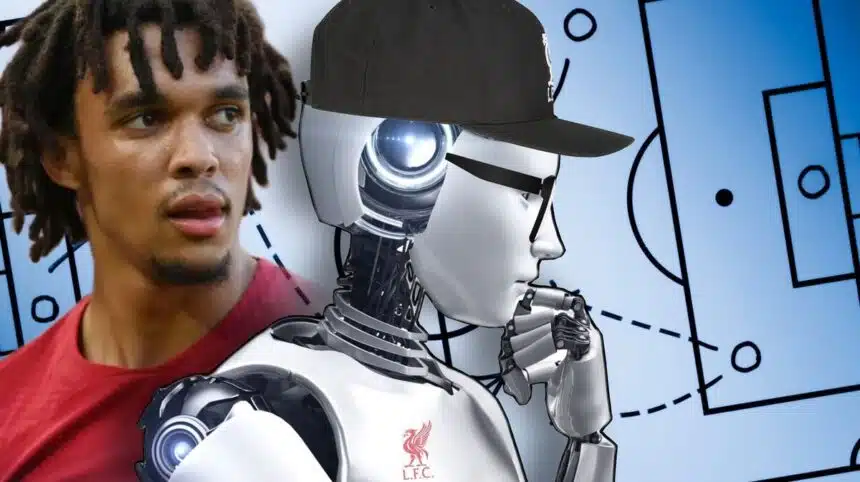In football, one split-second decision can rip a match from the jaws of defeat and carve out immortality. For Liverpool fans, that moment came in 2019, when Trent Alexander-Arnold whipped a lightning-fast corner to Divock Origi, sparking one of the greatest comebacks in Champions League history. That play wasn’t just magic—it was a masterclass in improvisation and timing.
But corner kicks are notoriously fickle. Coaches pore over footage, scribble diagrams, and probe for patterns. Still, the beautiful unpredictability of football often outsmarts even the keenest eye. So, what if we could lend a hand—or better yet, a brain—to those in charge of dead-ball routines?
Enter TacticAI, a decade-long collaboration between Liverpool FC and a cadre of AI researchers, now unveiled in Nature Communications. This system doesn’t just regurgitate stats; it blends predictive and generative AI to serve tactical insights about corner kicks, transforming raw data into actionable plans. And here’s the kicker: in blind tests, experts picked its suggestions over actual match tactics a staggering 90% of the time.
Corner Kicks, Reinvented
TacticAI tackles three burning questions every coach would kill to have answered:
- For a given corner setup, what’s the most likely outcome? Who snatches the ball, who heads it miles over the bar, and who tucks it home?
- After the whistle has blown, can we dissect what unfolded and find similar winning routines from the past?
- Finally, how can we tweak positions to nudge the odds toward a desired result—say, fewer shots conceded or a higher chance of a goal?
These aren’t hypothetical queries. They’re core to TacticAI’s predictive and generative modules, which learn from limited corner-kick data by harnessing geometric deep learning. By treating players as nodes in a graph—each endowed with position, speed, angle—and folding in all four reflections of the pitch, the system forces itself to see every corner from every perspective. Clever? Absolutely. Borderline cheeky. It slashes the need for vast datasets and yields a model that generalizes across stadiums, weather conditions, and those late-game jitters.
Beyond the Numbers: AI as the Coaches’ New Teammate
Let’s face it, sifting through hours of back-line shuffles and near-miss headers can feel like watching paint dry. TacticAI swoops in, computing crisp numerical “fingerprints” of corner routines so analysts can find golden patterns in seconds rather than days. In qualitative studies, football experts rated its top picks useful 63% of the time—nearly double previous methods that clung solely to where feet and heads were standing.
Then there’s the generative side, which is downright sci-fi. Imagine asking your digital assistant, “How should we set up defensively to almost eliminate any shot chance?” In response, TacticAI redraws player positions, offering concrete suggestions: shift this centre-back three meters to the left, nestle that midfielder here, and watch the danger area shrink. Coaches in blind trials couldn’t tell the AI’s layouts apart from real-life tactics—they actually preferred the AI’s versions.
I have to admit, there’s a thrill in thinking about Jurgen Klopp peering over a tablet, eyebrows raised, mid-analysis. Will he adopt every suggestion down to the pixel? Probably not. Will he glean fresh angles and hidden patterns? Almost certainly.
A Tool, Not a Puppet Master
There’s a nagging worry for purists: will AI gut the romantic chaos of football? Will we lose those moments of “I can’t believe they did that” spontaneity? I’m not convinced.
TacticAI is designed as an assistive tool, a springboard for human creativity rather than a robot coach barking orders. It lays out what’s possible; the final call still belongs to the humans on the touchline—those who feel the roar of Anfield behind them and know instinctive gambles sometimes trump probability.
In many ways, TacticAI feels like a brilliant, if eccentric, colleague who lives for corner analysis and never needs a coffee break. You can debate every suggestion, tweak it, or toss it out entirely. It doesn’t sulk. It learns.
Looking Beyond Corners
This is just the opening chapter. The researchers behind TacticAI hint at weaving in richer inputs—player fatigue, psychological pressure, even crowd noise. Could we one day have an AI whispering in a coach’s ear, “That full-back has a 35% higher chance of losing concentration in the 89th minute under floodlights”? It sounds a bit creepy, but it also underscores how sport can drive real-world AI leaps.
Football is messy, human, endlessly surprising. That’s why it’s so darn fascinating. And now, it’s also feeding into frontier AI research, teaching machines to juggle symmetry, motion, and split-second decision-making. The lessons extend far beyond the 18-yard box: logistics, robotics, disaster response—anywhere you need to predict how a bunch of actors will interact under pressure.
So, is TacticAI the dawn of a new era or just a fancy analytics gimmick? Time—and a few more corner routines—will tell. But if nothing else, it reminds us that innovation in sport isn’t limited to better shin pads or faster boots. Sometimes, the biggest breakthroughs come in lines of code.
Before you click away, here’s the deal: what do you make of Liverpool’s AI brainchild? Are we on the brink of genius or going a bit too far? Drop your hot takes in the comments below, and don’t forget to follow us on Facebook and Twitter for more behind-the-scenes sports scoops. Let’s keep the conversation rolling—after all, the beautiful game is nothing without a bit of banter.
Spurs scramble for midfield magic after Eze snub — who’s left to save the window?
Sources:
- www.deepmind.google/discover/blog/tacticai-ai-assistant-for-football-tactics/
- www.nature.com/articles/s41467-024-45965-x











